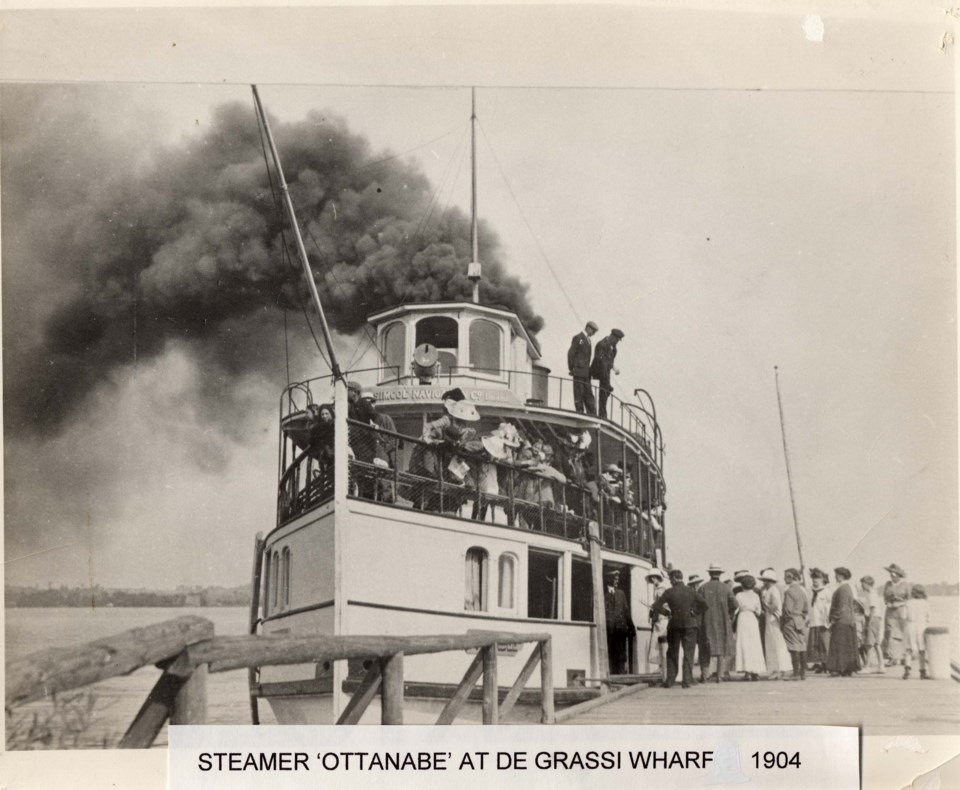In the predawn gloom of Aug. 14, 1916, the steamship Otonabee lay moored at the docks of the Peninsular Hotel on Big Bay Point.
Suddenly, and inexplicably, a fire started below deck. An engineer serving aboard the steamer Modello, which also happened to be tied up at the docks, spotted the glow of the fire and raced to alert the ship’s crew.
He found Capt. Peter McLean Campbell and purser Harold Hughes asleep aboard the Otonabee, and quickly notified them of what by then had become a raging inferno. The hold was already consumed, and flames were licking ravenously at the main deck. With the fire so well established, the officers were powerless to save the ship and had to dive overboard to save themselves. Soon, the flames leapt from the ship to the adjacent docks and began racing along the wharf.
“There was a lighthouse at the end of the dock which had several cylinders of gas stored,” A.T. Gooch remembered in the Innisfil Historical Review for 1954.
When the fire reached the lighthouse and turned it into an oversized Roman candle, those fighting the blaze instantly recognized the danger. Any moment, the gas tanks powering the lighthouse’s searchlight would ignite and blow up. Gooch remembered that when the cylinders did finally explode, they destroyed the lighthouse, reduced the wharf to splinters, and “broke windows and dishes for quite a distance.”
In fact, the sound and reverberations were heard and felt as far away as Barrie. Many people thought the war raging in Europe had somehow come to them, that perhaps the Germans had decided to bomb Canada.
It had only been a year since the first air raids were launched by German zeppelins upon England, after all, and by the summer of 1916, a total of 550 civilians had been killed by bombs dropped from these airships.
The explosion at Big Bay Point caused near hysteria in some corners. As windows shattered and sent deadly splinters careening into homes, people began to imagine the worst. Barrie, of course, was well beyond the range of any aircraft of the era, but for a time, some imaginations ran amok.
By the next morning, the story of Otonabee’s demise had spread and people began to calm down. It had been a disaster, but far from what many had imagined.
As for the ship itself, when the smoke cleared, she lay at the bottom of the lake with only her smokestack showing above the water’s surface. Beyond salvage, she was left there for the lake to claim.



